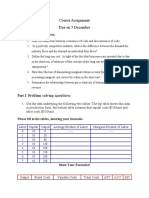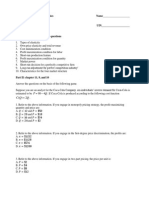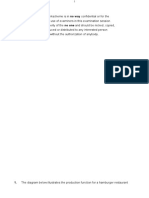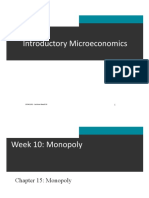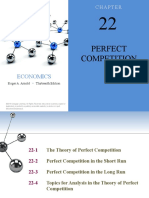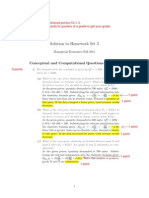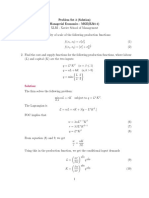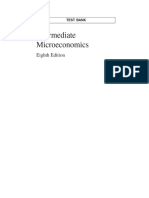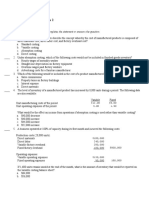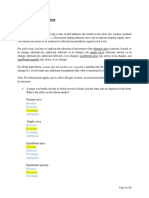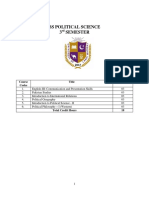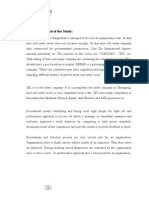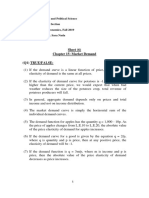0% found this document useful (0 votes)
338 views13 pagesAssignment 1
Perfect competition is normally regarded as better than monopoly for several reasons:
1) Under perfect competition, there are many small producers and consumers, ensuring no single agent can influence the market. This keeps prices low through competition.
2) Barriers to entry and exit are low or nonexistent under perfect competition, allowing for more choices for consumers.
3) Monopolies can restrict output and raise prices above costs to earn higher profits, whereas perfect competition drives prices down to marginal costs, benefiting consumers.
Using supply-oriented policies rather than demand-oriented ones to discourage consumption of certain products can cause problems for government policy. Supply-side policies focus on increasing production but if demand is not also
Uploaded by
Muhammad Asim Hafeez ThindCopyright
© © All Rights Reserved
We take content rights seriously. If you suspect this is your content, claim it here.
Available Formats
Download as DOCX, PDF, TXT or read online on Scribd
0% found this document useful (0 votes)
338 views13 pagesAssignment 1
Perfect competition is normally regarded as better than monopoly for several reasons:
1) Under perfect competition, there are many small producers and consumers, ensuring no single agent can influence the market. This keeps prices low through competition.
2) Barriers to entry and exit are low or nonexistent under perfect competition, allowing for more choices for consumers.
3) Monopolies can restrict output and raise prices above costs to earn higher profits, whereas perfect competition drives prices down to marginal costs, benefiting consumers.
Using supply-oriented policies rather than demand-oriented ones to discourage consumption of certain products can cause problems for government policy. Supply-side policies focus on increasing production but if demand is not also
Uploaded by
Muhammad Asim Hafeez ThindCopyright
© © All Rights Reserved
We take content rights seriously. If you suspect this is your content, claim it here.
Available Formats
Download as DOCX, PDF, TXT or read online on Scribd
/ 13


